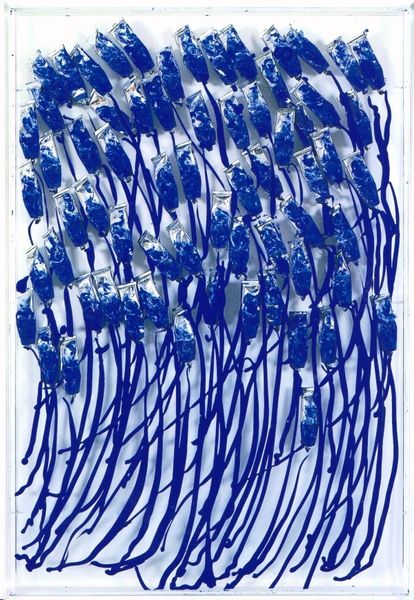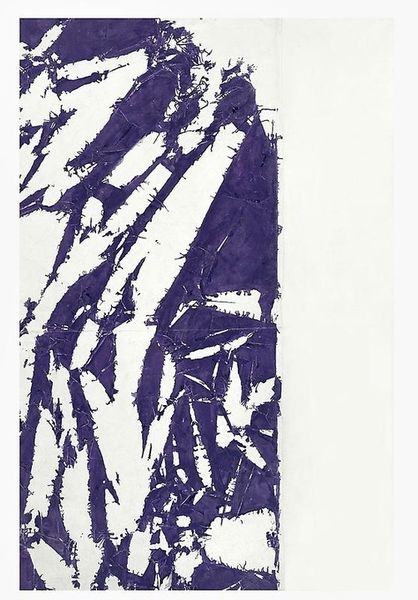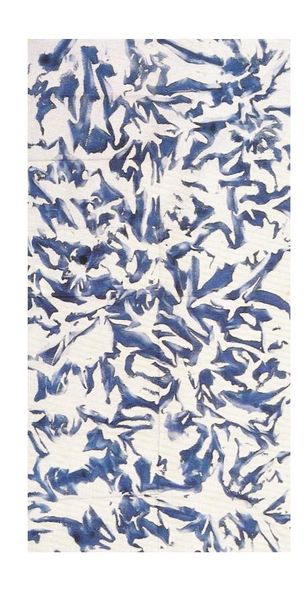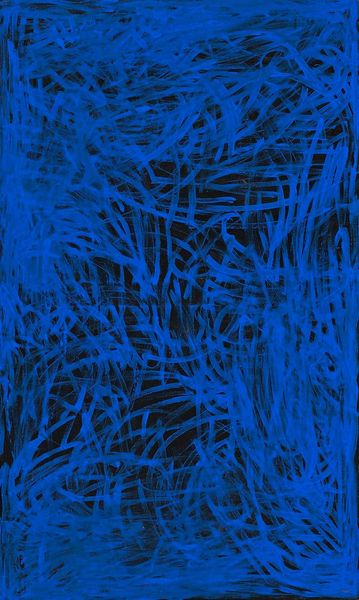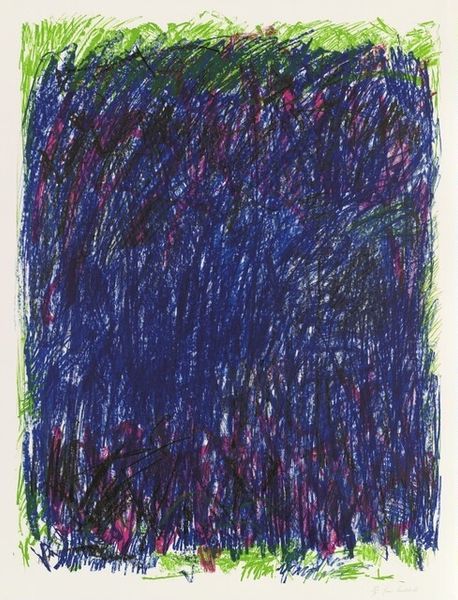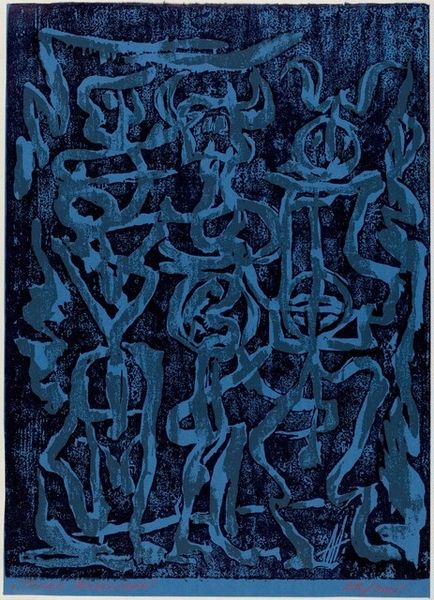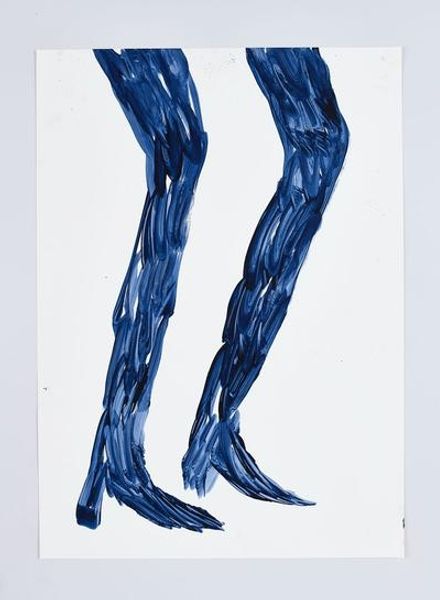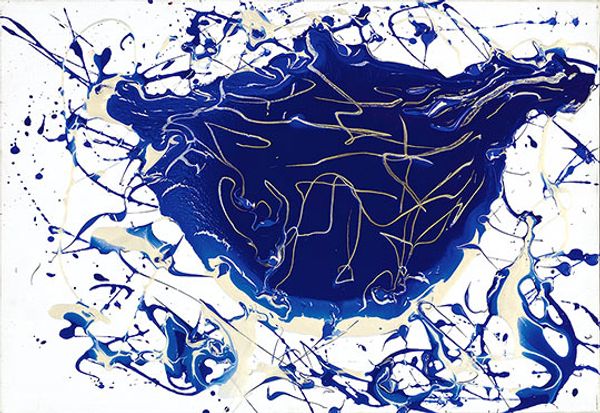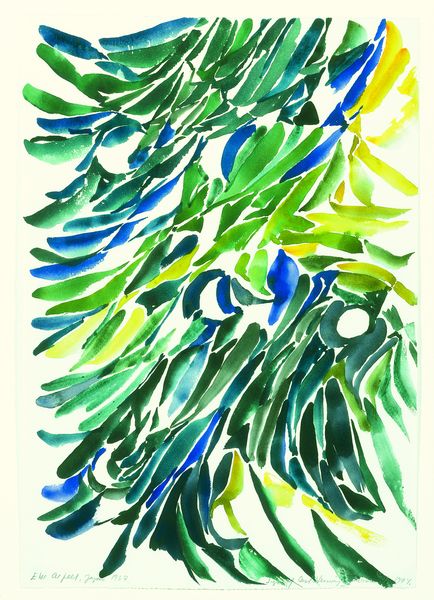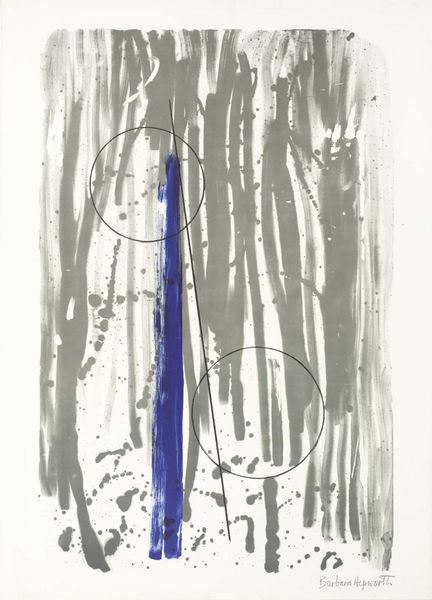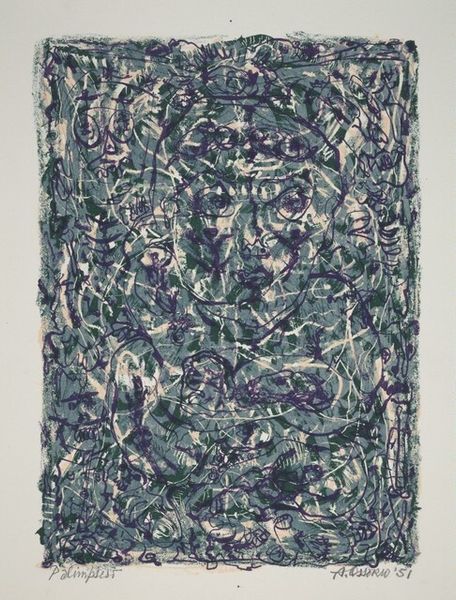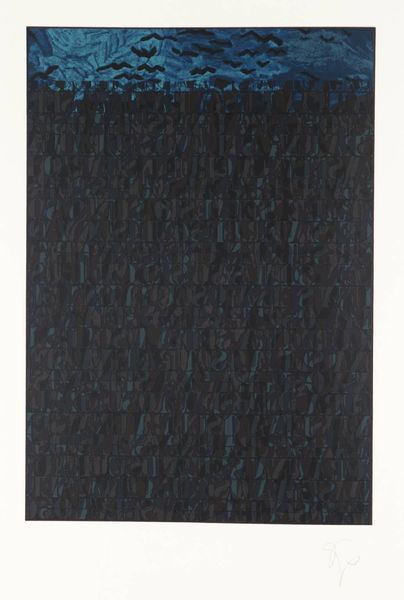
acrylic-paint
#
abstract-expressionism
#
organic
#
acrylic-paint
#
organic pattern
#
abstraction
#
pattern repetition
Dimensions: 76 x 56.5 cm
Copyright: 2012 Sam Francis Foundation, California / Artists Rights Society (ARS), NY
Curator: Let's dive in! Editor: We're looking at Sam Francis's 1959 acrylic paint "Untitled." I am struck by its almost overwhelming blue cascade, which feels simultaneously turbulent and serene. How do you interpret this work? Curator: The lack of a definitive title is interesting; it forces us to grapple with the pure essence of the artwork itself. The painting emerged from the Abstract Expressionist movement, where artists explored non-representational forms. This historical period, with post-war anxieties and challenges to social norms, often saw art used as a vehicle for deep, often raw, personal and cultural expression. Looking at the almost violent application of pigment, and then considering it in the social context of its creation, what kind of tension do you see between the act of creation and what emerges on the canvas? Editor: I can see the tension you are talking about. While chaotic, the organic shapes suggest something growing or evolving. It reminds me of thinking about freedom versus containment. It almost looks like looking through prison bars, but instead of concrete, we have acrylic paint. I didn't even think of the cultural impact before; it gives so much to consider. Curator: Precisely! Also consider how color affects you. The specific blue Francis uses - do you associate any social narratives, identity associations, or psychological states to it? How does the absence of other colors, or the stark contrast between blue and white, make you feel? Editor: Blue definitely has ties to masculinity, even sadness. Its impact here emphasizes both freedom and loneliness. The repetitive structure gives it almost the rhythm of a lament, a sad but self-empowering wail against some deep structure. Curator: That's a fascinating read! Considering its historical background alongside Francis’s personal experiences, it challenges how we see, experience and talk about art. It also proves that abstract art can represent something, even when "Untitled." Editor: I love how unpacking it unveils complex layers of identity, emotion, and social critique through what seemed like a simple use of color and form. Curator: Indeed, art invites us to challenge perceptions and engage in broader cultural dialogues.
Comments
No comments
Be the first to comment and join the conversation on the ultimate creative platform.
